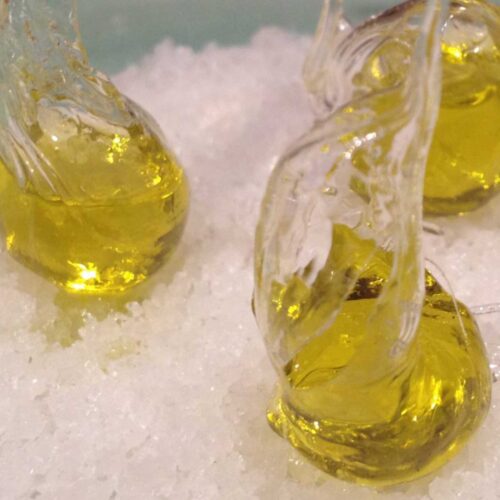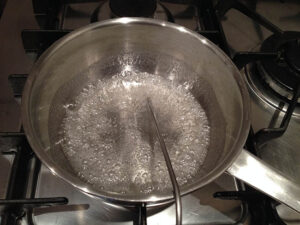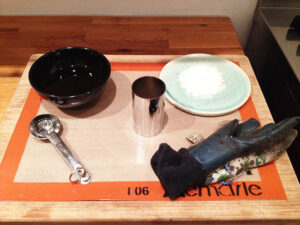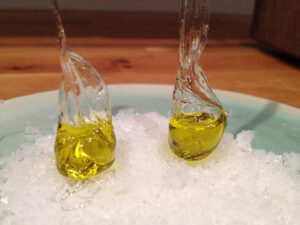Introducing our beuatiful Edible Glass recipe, featuring the magic of Isomalt! This unique creation will not only amaze your guests with its stunning visual appeal, but also tickle their taste buds with its delightful texture. Whether you’re looking to add a touch of whimsy to a dessert, create a show-stopping centerpiece, or simply explore the fascinating world of sugar artistry, this recipe is your ticket to culinary adventure.
With clear, step-by-step instructions, you’ll soon be on your way to crafting an impressive and delicious masterpiece. So, gather your ingredients, unleash your inner artist, and get ready to experience the sheer joy of making Edible Glass. Happy cooking!

Edible Glass – with Isomalt
This experience is unique: make this edible glass with Isomalt and serve your guest a magical appetizer.
Equipment
- Metal Cylinder
- Heat Gloves
- Cooking thermometer
Ingredients
- 20 ml water
- 200 gram Isomalt
- olive oil the best you can get
- sea salt
Directions
- Weigh about 150 grams of Isomalt, the exact amount does not matter, as long as you have at least 1 cm. melted Isomalt in your saucepan. Add about 20 ml here. water, this ensures that the Isomalt warms up more gradually.
- The trick is to slowly heat the Isomalt to 166 degrees celcius. At that moment all the 'sugars' have melted.First of all, bring the Isomalt and the water to a boil while stirring. Then the Isomalt becomes watery and transparent. From about 120 degrees it starts to bubble. Use a cooking thermometer to monitor the temperature.

- Once the temperature has reached 166 degrees celcius, remove the pan from the heat. Now let the Isomalt cool down to 90 degrees. Note: Between 90 and 78 degrees, the Isomalt is at the perfect temperature to form (edible) glass.
- While cooling, collect all the things you need:– a bowl with the olive oil in it– a spoon with which you can pour the olive oil on the Isomalt– a heat-resistant glove– a silicone mat or alternatively a strip of baking paper.– a plate of salt. You place the glass molds on this when they are ready to prevent contact with water/moisture

- When the Isomalt has cooled to 90 degrees, place the metal tube in the pan. Put on your glove and very slowly lift the tube out of the Isomalt until a thin layer (a 'film') of Isomalt forms at the bottom of the tube.
- Now hold the tube with the Isomalt film approx. 2 cm. above the silicone mat or baking paper. With your other hand, scoop up a spoonful of olive oil (or dressing or other oil-based liquid) and slowly pour it into the tube.
- As soon as the olive oil hits the Isomalt, it quickly starts to solidify. Due to the weight of the Isomalt, the center of the 'movie' slowly drops down and forms a sphere. Let this ball rest on the mat/baking paper and slowly lift the tube up. The remaining part of the movie now forms a conical shape above the sphere.Guide the formation of the 'glass' with your hand; the Isomalt solidifies in seconds, it will take some practice until you find the perfect speed.Note: slowly lift the tube upwards as soon as you pour in the olive oil.
- Please note: water is the biggest enemy for your new Isomalt creations. Therefore, for example, present them on a layer of beautiful sea salt:

- If you want to store them for a longer period of time, you have two options:– in a large jar of (olive) oil that can be closed airtight– in an airtight container to which you add a sachet of desiccant
- Use the edible glas for example to present a garlic-oil to your guest that they can 'break' open above a green side salade!
Tried this recipe?Let us know how it was!
